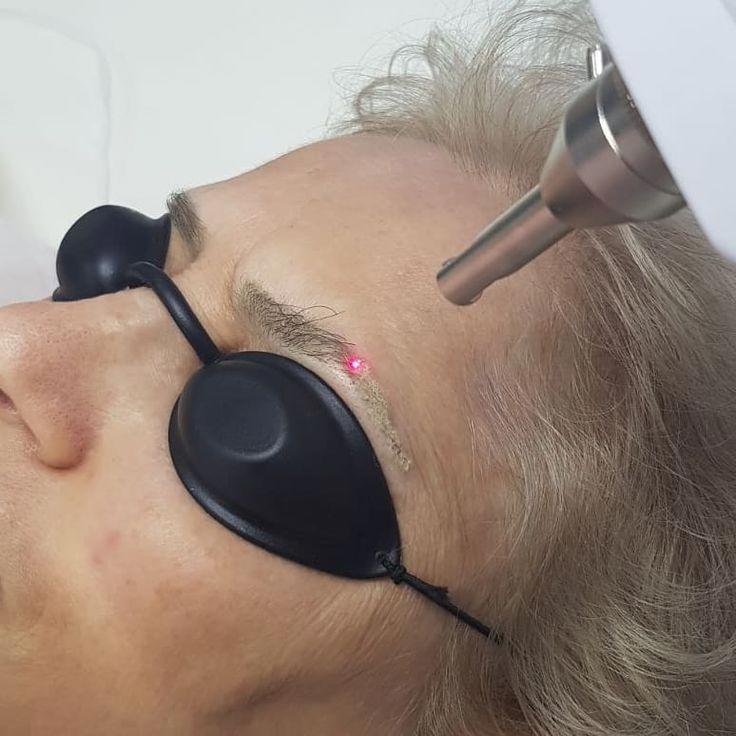
Laser Semi Permanent Make Up Removal
Laser tattoo removal is widely recognised by experts as the most effective and cost-efficient method for tattoo removal. This procedure uses lasers to break down tattoo ink particles, making them easier for the body's immune system to eliminate.
Procedure Overview
Laser tattoo removal involves targeting the tattoo with a laser to fragment the ink particles. These fragments are then absorbed into the bloodstream and eliminated naturally by the body's immune system. The cost of laser removal varies based on (but not limited to): size, colour, location, age, and whether it is a cover-up of previous SPMU, artist's work, what product was used: eg: ink or pigment, depth of ink / pigment, and ink / pigment quality, skin condition: scare tissue beneath etc all of which play significant roles in the removal process.
Effectiveness Based on Ink Colour
- Easiest to Remove: Black and darker ink / pigment
- Moderately Difficult: Green and blue ink / pigment colour undertones or skin colour cooling/ warming ink / pigment
- Most Difficult: Purple, yellow, and white ink
The laser shatters the ink on impact, allowing the body to dispose of the small particles through the lymphatic system. For this reason it is good advice to drink plenty of water to aid the lymphatic system.
Aftercare Instructions
- First Three Days: Apply a layer of antibiotic healing ointment . Avoid applying other skin care routine products or makeup. Avoid hair spray in the treatment area.
- Post-Three Days: Keep the area clean and dry, and apply moisturising agents like Vaseline, Aquaphor, or hydrocortisone cream. Vitamin E ointment is also beneficial for skin repair.
- Sun Protection: Use SPF 50+ sunblock when outdoors. Avoid sun exposure, fake tans, retinol, AHA's, BHA's etc and tanning beds.
- Hygiene: Keep the area clean and dry, avoid sweating, and do not pick at scabs or blisters.
- General Care includes (but not limited to): Avoid fake tans, sunbeds, sun exposure direct sunlight, high-pressure water, and activities that might cause skin damage or infection.
Showering After Laser SPMU Removal
After removing the bandage, you can shower and gently clean the treatment area with mild soap. Avoid soaking the area in baths, hot tubs, or swimming pools until it is completely healed.
Potential Risks include (but not limited to):
While laser tattoo removal carries some risks, it generally has a lower risk of scarring compared to other methods. Potential side effects include:
- Skin Changes: Permanent darkening or lightening of the treated area.
- Textural Changes: Scarring or other irreversible skin changes.
- Allergic Reactions and Burns: Varying severity.
- Residual Effects: "Ghost" images of the tattoo/ SPMU or visible ink / pigment remnants that do not respond to treatment.
- Infection: Ensure proper aftercare to minimize risks.
- Hyper/Hypopigmentation: Changes in skin pigmentation.
- Skin Pits or raised marks: Small indentations in the skin. Raised marks on the skin
Recovery and Treatment Frequency
Tattoo removal treatments should be spaced at least six weeks apart to allow the skin sufficient time to recover. Healing times can vary, and it may take up to 6-8 weeks for complete recovery before the next session.
Influencing Factors
- Depth of Ink: Professional tattoos / SPMU, which penetrate deeper into the dermis, often take longer to remove than amateur tattoos and may not fully go
- Lifestyle Factors: Smoking can prolong the removal process.
- Sun Exposure: Avoid sun exposure before, during, and after treatment as tanned skin complicates the removal process.
Consultation and Test Patch
A full consultation and test patch are essential before commencing treatment to ensure safety and effectiveness.
Pricing
Due to the variables involved in tattoo removal, prices are provided on consultation.
